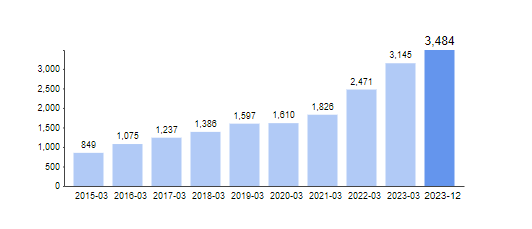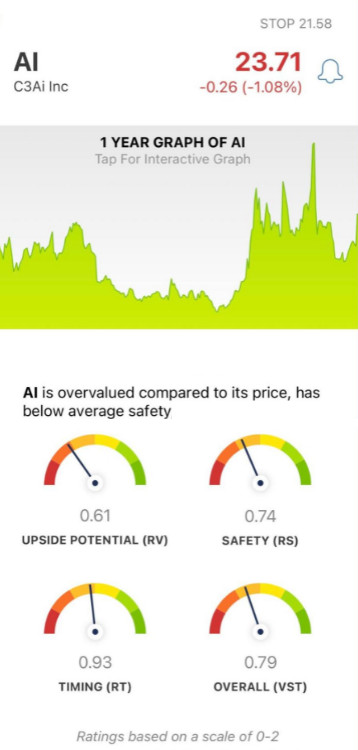20 Free Suggestions For Choosing AI Stock Analysing Sites
20 Free Suggestions For Choosing AI Stock Analysing Sites
Blog Article
Top 10 Tips On Assessing The Integration And Compatibility Of Ai Stock Predicting/Analysing Trading Platforms
Integration and compatibility are key factors when considering AI stock predicting/analyzing trading platforms. Integrating your platform into existing systems, tools, and workflows is a fantastic way to boost efficiency. We've compiled our top 10 suggestions on how you can assess the compatibility and the integration of these platforms.
1. Check Brokerage Integration
Supported Brokers: Ensure that your platform is compatible with your broker account or trading platform.
Trade execution: Ensure that the platform offers direct execution of trades using the broker integrated.
Account synchronization: Find out whether the platform allows synchronization of accounts' balances, positions and transaction history in real time.
2. Check the API's availability
API access is crucial: Developers can use an API, or Application Programming Interface (API) to create their own tools and automate their processes.
API documentation: Check if the API is well-documented with explicit examples and cases of use.
Rate Limits: Verify the API's rate limits to confirm that they are reasonable and will handle your expected usage.
3. Review Third-Party Integration
Popular tools: Check if your platform is compatible with the most popular tools like Google Sheets or Excel.
Data export and import: Ensure that your platform supports easy export/import of data to and from other tools.
Plugins/extensions: Verify if the platform can support extensions or plugins to add functionality.
4. Test Compatibility Operating Systems
Desktop compatibility: Make sure the platform is compatible with the operating system of choice (Windows, macOS or Linux).
Mobile compatibility: Verify if there is an application that is mobile compatible available for iOS or Android.
Web-based accessibility: To improve flexibility, verify that the platform's interface can be accessed through an internet browser.
5. Evaluate Data Integration Capabilities
Data sources: Make sure the platform can integrate with various data sources (e.g., market data providers, news feeds, social media sentiment).
Real-time feeds of data: Verify that the platform allows for real-time integration of data to give the most current analysis.
Import historical data - Make sure whether the platform permits you to import historical data into your backtesting or analytical software.
6. Cloud and On Premise Compatibility
Cloud-based platform is accessible anywhere with an Internet connection.
On-premises solutions: Determine whether you'd like to install the software on your premises.
Look for hybrid alternatives. It is a type of model which combines cloud and on-premises features.
7. Check for Cross Platform Syncronization
Device synchronization. The platform must sync data and settings on every device including mobile, desktop and tablet.
Check that changes made on one device are immediately reflected on other devices.
Access from offline: Find out if the platform allows only limited access to data or functions in offline mode.
8. Verify the compatibility of trading strategies
Automated or algorithmic trading: Verify that the trading platform supports these strategies.
Custom indicators: Check whether the platform supports the use of custom technical indicators or scripts.
Strategy backtesting: Check whether the platform can be used for back-testing trading strategies using historic information.
9. Examine Security and Compliance
Data encryption: Ensure that the platform uses encryption for data that is in rest and in transit.
Verify that your platform is compatible with an authenticated method that is secure (e.g. 2-factor authentication).
Regulatory compliance - Check if your website is in compliance with the applicable laws, e.g. GDPR. FINRA. SEC.
10. Test Scalability Performance
Scalability: Ensure your platform can handle an increasing amount of data and users and users, so that it can grow with your business.
Performance under load: Find out whether your platform is able to adapt to conditions of high volatility in the market.
Utilization of resources: Make sure that the system is using resources effectively (CPUs and memory).
Bonus Tips
Feedback from users: Read user reviews and testimonials to evaluate the integration capabilities of the platform.
Trial period: Try the platform for free or download a demonstration to test how it works with your current software and workflow.
Customer Support: The platform needs to provide a solid support service in the event of integration issues.
Following these tips can assist you in assessing the compatibility and seamless integration of AI trading platforms that forecast or analyze price of stocks. They can also improve the performance of your trading. View the best inciteai.com AI stock app for more tips including ai stock trading app, best ai copyright trading bot, ai stock market, trade ai, investing in ai stocks, ai investing, ai stocks to invest in, best ai stocks to buy, ai investment platform, ai stock and more.
Top 10 Tips For Assessing The Risk Management Of Ai Stock Predicting/Analyzing Trading Platforms
Risk management is a crucial element of any AI trading platform that predicts or analyzes stocks, as it helps protect your capital and minimize potential losses. A platform with robust tools for managing risk can assist you in navigating unstable markets and help users to make better decisions. Here are the top ten suggestions for assessing risk management capability of these platforms.
1. Examine Stop-Loss features and Take Profit features
Levels that can be customized - Make sure that the platform lets you adjust your stop-loss, take profit and profit level for each trade or strategy.
Examine the platform to determine whether it is compatible with trailing stopped, which will adjust automatically when the market moves in your direction.
Guaranteed stop orders: Find out whether the broker offers guaranteed stop-loss orders, which guarantee that your position will be closed at the price you specified even in markets that are volatile.
2. Assessment Position Sizing Tools
Fixed amount. Make sure you have the option to define your positions' sizes in terms of a fixed dollar amount.
Percentage of portfolio: Determine whether you can establish position sizes in percentages of your portfolio total to reduce risk proportionally.
Risk-reward percentage: Examine whether you are able to determine the risk-reward ratio for specific trades or strategies.
3. Make sure you are using Diversification Assistance
Multi-assets trade: Ensure that the platform supports trading across multiple asset categories (e.g. ETFs, stocks options, forex etc.) to diversify portfolio.
Sector allocation: Check whether the platform provides tools for monitoring and managing the exposure of sectors.
Geographic diversification: Verify if the platform permits trading on international markets to spread the geographic risk.
4. Examine the Margin and Leverage Controls
Margin requirements - Make sure that the platform explains the margin requirements clearly.
Check the platform to see if it allows you to limit the leverage you use to limit the risk.
Margin calls - Examine whether your platform alerts you to margin calls in a timely manner. This can help avoid liquidation.
5. Examine the risk Analytics and Reporting
Risk metrics: Be sure the platform has the most important risk metrics to your portfolio (e.g. Value at Risk (VaR), sharpe ratio, and drawdown).
Evaluation of scenarios: Make sure the platform you are using permits you to create market scenarios and assess risk.
Performance reports: Check whether the platform has comprehensive performance reports, which include risk-adjusted returns.
6. Check for Real-Time Risk Monitoring
Monitoring your portfolio. Make sure that your platform can monitor in real-time the risk associated with your portfolio.
Notifications and alerts: Check whether the platform offers real-time alerts regarding risks-related events (e.g. margin breach and Stop-loss triggers).
Risk dashboards: See whether the platform provides risk dashboards that can be customized to give you an in-depth view of your risk profile.
7. Test Stress Testing and backtesting
Test your strategies for stress: Ensure that that the platform you select allows you to test your portfolio and strategies under extreme market conditions.
Backtesting: Make sure that the platform supports backtesting strategies that are based on past data in order to determine risk and the performance.
Monte Carlo simulations: Verify whether the platform utilizes Monte Carlo simulations to model the possibility of outcomes and assess the risk.
8. Assess Compliance with Risk Management Regulations
Compliance with the regulatory requirements: Ensure the platform meets the relevant risk management regulations in Europe and the U.S. (e.g. MiFID II).
Best execution: Ensure that the platform is in line with the best execution methods. This will ensure that trades are executed at the highest price possible to avoid slippage.
Transparency. Verify that the platform is transparent and provides clear disclosures about the risks.
9. Verify for User Controlled Risk Parameters
Custom risk rules: Ensure the platform lets you set up your own risk management rules (e.g., maximum daily loss, maximum position size).
Automated risk controls: Determine if the platform can automatically enforce risk management rules according to your pre-defined parameters.
Manual overrides Determine for the possibility of manually overriding the automated risk control in the event of an emergency.
Review user feedback and case studies
Review by users: Conduct user studies to evaluate the platform's effectiveness in managing risk.
Testimonials and case studies The case studies and testimonials will demonstrate the risk management capabilities of the platform.
Community forums Find out if there's a vibrant community of traders who share tips and strategies for risk management.
Bonus Tips
Free Trial: Test the platform's features for risk management in real scenarios.
Support for customers: Make sure the platform provides a solid support in relation to risk management concerns or questions.
Educational resources: Check whether the platform has instructional resources or tutorials on risk management best practices.
With these suggestions, you can effectively assess the risk management capabilities of AI stock predicting/analyzing trading platforms and ensure you select a platform that helps protect your capital and minimize possible losses. It is crucial to utilize effective risk-management tools in order to successfully navigate volatile markets. Take a look at the recommended related site about ai trader for more tips including best ai stocks, stock predictor, ai stock trading bot free, best copyright prediction site, ai trading platform, best stock analysis app, ai chart analysis, chart ai trading, ai stock trading app, incite and more.